- 01 February 2023
- Return
We are happy to share in these pages key data and figures about the current and upcoming French campaigns. Have a look at this report to prepare your purchases of essential oils, hydrosols, dried herbs and do not hesitate to contact us for any inquiry.
Editorial

The year 2022 has come to an end, a year rich in commitments, evolutions and opportunities while respecting more the proximity, the human, the traceability and the nature.
2023 is now here, and if we went even further together this year?
The Elixens team wishes you a wonderful year 2023.
General background on aromatic plants
Weather analysis
The weather is one of our main concern because it has a direct impact on the harvests.
We give you our feedback from the last few months and we share insights on future forecasts within our production area (South-Eastern France).
Autumn 2022
The region experienced heavy rainfall this fall which partly compensated for the spring deficit (more than 900mm of cumulative rainfall for the year 2022). Temperatures remained very mild except for a small snow episod mid-December. These conditions were rather favorable for our crops.
Lavandin market
At the end of December, the French Essential Oils Interprofessional Committee published the final data for the 2022 "Lavender and Lavandin" campaign. Estimates of the area under cultivation were confirmed. With a little less than 33,000 ha, the surface area has fallen very slightly, marking a clear break in the upward trend observed for several years.
However, these overall figures must be precised:
- Organic production areas continue to grow. Data for 2022 are not yet available, but in 2021 the surface area of lavender increased by 21%.
- The structure of lavandin production is developing:
- The three main producing departments are the historical departments of Alpes-de-Haute-Provence, Drôme and Vaucluse. The production areas of these three departments have increased significantly over the last 5 years (+17%).
- However, their share of the total land area is decreasing. While they represented approximately 92% of the surface area in 2018, in 2022 they will concentrate 85% of the surface area.
- In 2022, the areas cultivated in Alpes-de-Haute-Provence and Vaucluse will decrease by 3.5% and by 1% in Drôme, due to difficult weather conditions and massive pest attacks in historical production areas.
- The surface areas of the other departments increased by more than 10%.
To try to anticipate future developments, it is interesting to analyze the current typology of lavender producers:
- The 33 000 ha of lavender and lavandin are exploited by a little more than 3100 farms that we will classify in 3 categories:
- Generalist farms: for these farms, the surfaces cultivated with lavender and lavandin represent less than 30% of the surfaces of the farm. They have an average surface of 4ha and contribute in a complementary way to the income of the farm.
- The specialized farms allocate 30 to 70% of their surface to the cultivation of lavender and lavandin. They have an average surface of 25 ha. The share of income from lavender cultivation is essential to the financial balance of the farm.
- The exclusive farms allocate more than 70% of their surface to the cultivation of lavender and lavandin. The income from lavender cultivation constitutes the only income of the farm.
Based on this typology of farms, we note that ¾ of them are generalists and exploit 1/3 of the cultivated surfaces.
20% of the farms are specialized and represent altogether half of the surfaces. They are of important size and constitute majority of the productive capacity of our sector.
Finally 10% of the farms are exclusive. They exploit approximately 20% of the surfaces.
- The estimated 2022 harvest of lavandin grosso is confirmed to be lower than in 2021 with approximately 1700 t of essence produced.
The three main producing departments record strong decreases ranging from -25% for Alpes-de-Haute-Provence to -16% for Vaucluse. The production of the other departments increased by +7% in line with the development of surfaces.
At the same time the market has contracted significantly with a decrease in volumes sold of -24% between 2021 and 2022. With a little less than 900t consumed, for 1700t produced, a surplus of about 800t will swell the stocks of the Lavandin Grosso sector. Over the last three campaigns, a very large stock has accumulated at producers and cooperatives.
The prices of their essential oils are at historic lows.
The market conditions are putting specialized and exclusive structures in severe economic and production difficulty at the level of production and marketing.
The interprofessional instances are acting to help producers who are victims of agricultural disasters while discouraging them from replanting lavandin. An envelope of 10M€ has been pre-allocated by the Senate, to accompany this action.
- These very uncertain market conditions are expected to continue and push some growers to abandon the cultivation of lavandin. In the absence of available and approved treatment against midge, it is likely that the production potential will be reduced in the coming years, especially in the historical intensive production areas.
The trends identified will therefore be amplified with a significant reduction of the areas under cultivation in the historical regions.
The new production areas will be in full operation. However, the increase in acreage in these areas should be interrupted in the current context.
Market prices will therefore remain at a historically low level, certainly below production costs. This situation will only be challenged when the sector's stock is reabsorbed. Two parameters will determine this kinetic :
- The level of demand
- The kinetics of the reduction of the surfaces in culture. This could be violent under the combined effects of the economic difficulties of the producers and the climatic and sanitary impacts on the crops.
To avoid new speculative effects, we believe it is time to engage in discussions with customers concerned about sustainable sourcing of French lavender.
Elixens has worked on innovative and more sustainable solutions. We are at your disposal to explain them to you.

Elixens France
Coniferous sector
Our distillery located on the southern slopes of the Vercors does not remain idle in winter: we harvest conifers from the neighboring forests or moors. The organic certification of the sites guarantees the absence of pollution and the preservation of the species. We distill, depending on the case, foliage or wood. We offer the following species:
The atlas cedarwood (Cedrus atlantica):
This tree which was introduced at the end of the 19th century has acclimatized well in our region where it is expanding, the global warming suiting it rather well. Our local production does not endanger the resource unlike what is produced in North Africa. The essential oil from the trunk has a powerful, woody and very characteristic smell. It is used in perfumery, cosmetics and aromatherapy.
The common juniper (Juniperus communis L.):
Very common in the moors on the lower altitude plateaus of the Vercors where it tends to grow at the expense of the meadows. Ewe or cow breeders, who wish to clear the brush to maintain their pastures, find an outlet by bringing us the finest twigs, covered with juniper berries. This essential oil has multiple properties recognized in aromatherapy.
The douglas (Pseudotsuga menziesii):
This large tree resembling a fir tree is native to the forests of North America; it has also been introduced into France where it has found favorable conditions in forestry on acidic soils and at altitude. The harvesting of the branches can be done: either during the cutting of the plantations when they have reached their maturity, or, and it is what we prefer, during the formation of the young plantations where the lowest branches are pruned to obtain a linear trunk without knots. The essential oil, fresh with notes of citrus, is indicated for the creation of home perfumes or candles, but also hygiene products etc.
The Scots pine (Pinus sylvestris):
Very abundant on the southern slopes of the Vercors, the branches bearing the needles are harvested by our farmers who exploit the wood, the distillation providing them with an additional income on their forest plots. The essential oil is used in aromatherapy, in diffusion for action in the respiratory sphere.
Our essential oils are produced from local materials in a traditional distillery in stainless steel tanks. We scrupulously respect the protocols to obtain high quality essences corresponding to the most demanding standards.
All these very aromatic species can also produce hydrosols as a by-product of the distillation which are powerfully perfumed: a reservation is necessary if you wish important quantities.
Cedar in our distillery
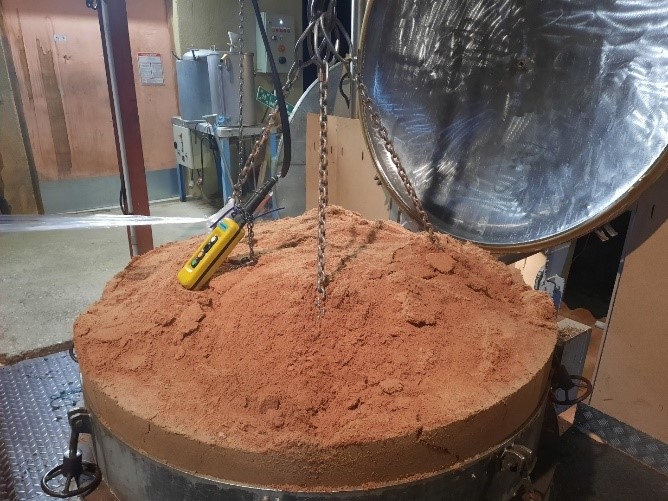
Douglas fir branch
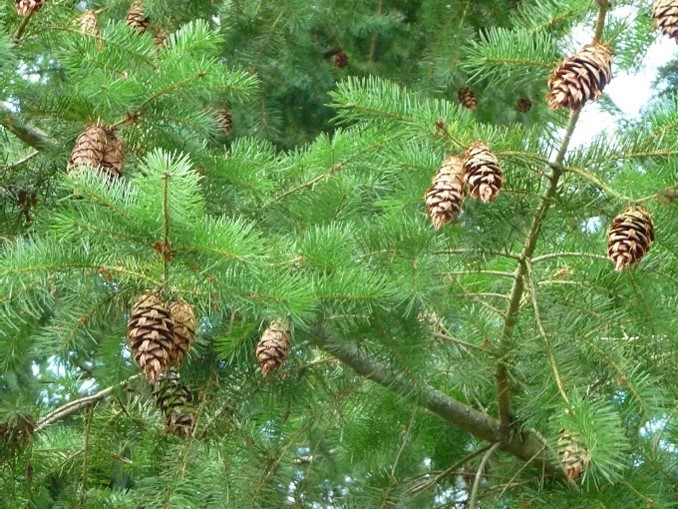
Juniper branch
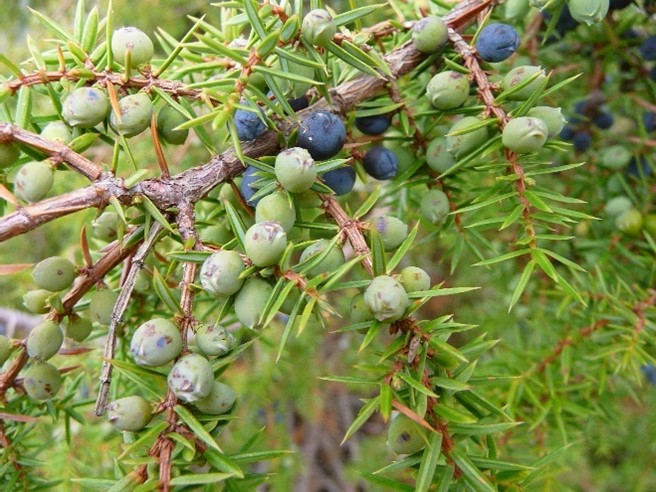
Scots pine branch
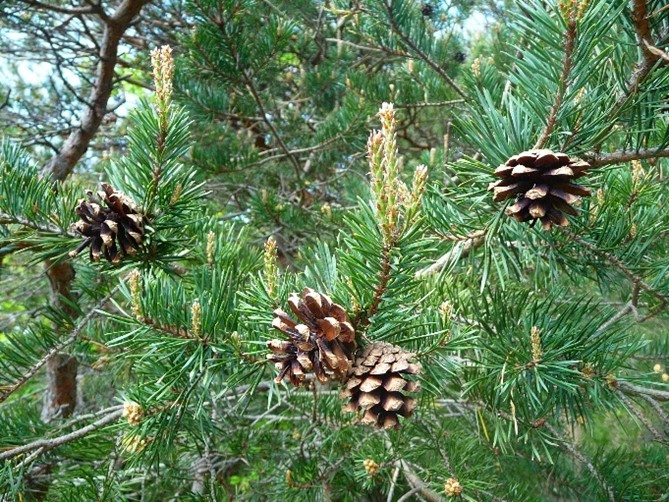
Essential oils from our Dauphiné-Provence sector
In contrast with plants used for herbal teas, where the French origin is already recognized and highlighted, it appears that the aromatherapy industry has not yet integrated this origin as a marketing claim. However, many essential oils from our Dauphiné Provence sector have a major interest in aromatherapy as active ingredients for cosmetics or food supplements. Their French origin and the fact that they are produced following organic agriculture greatly limits the risks of contamination. Here is a short list in addition to the conifers described above:
The italian Helichrysum (Helichrysum italicum):
We cultivate a Corsican type, its anti-hematoma properties are widely recognized, comparable to that of arnica. A major cosmetic brand claims its anti-aging virtues that reinforce its other name: everlasting. The low yield/ha of this essential oil makes it an expensive oil for French production, but this argument, which is often put forward, is not necessarily justified by this origin, which is rarely found in aromatherapy bottles..
Thymes:
3 varieties of Thymus vulgaris with chemotyped essential oils are cultivated by our partner farmers: Thymes with linalool, thymol or thuyanol; these thymes have anti-bacterial properties but each type has its own properties. Thuyanol is still rare in aromatherapy ranges, although its production has developed.
The lemonbalm (Melissa officinalis):
A traditional aromatic plant, its oil is an exceptional plant concentrate since it takes 4000 Kg of fresh plants to obtain 1 kg of essential oil. Its perfume, both lemony and herbaceous, is appreciated. Its calming properties are recognized for cosmetic use. As a food supplement, it is an ingredient of liqueurs.
The green oregano of the Drôme (Origanum heracleoticum L):
Perennial plant resistant to drought, its essential oil, rich in carvacrol, makes it an active product with sanitizing and antibacterial actions. It can be used in formulas to help stabilize products.
The provence rosemary (Rosmarinus officinalis):
Also called pyramidal rosemary grows on dry soils. Quite sensitive to cold, it is very comfortable in our region. The essential oil with cineole makes it a product intended for the aromatherapy but also usable in the perfumes.
Field of Italian helichrysum at the foot of the Vercors
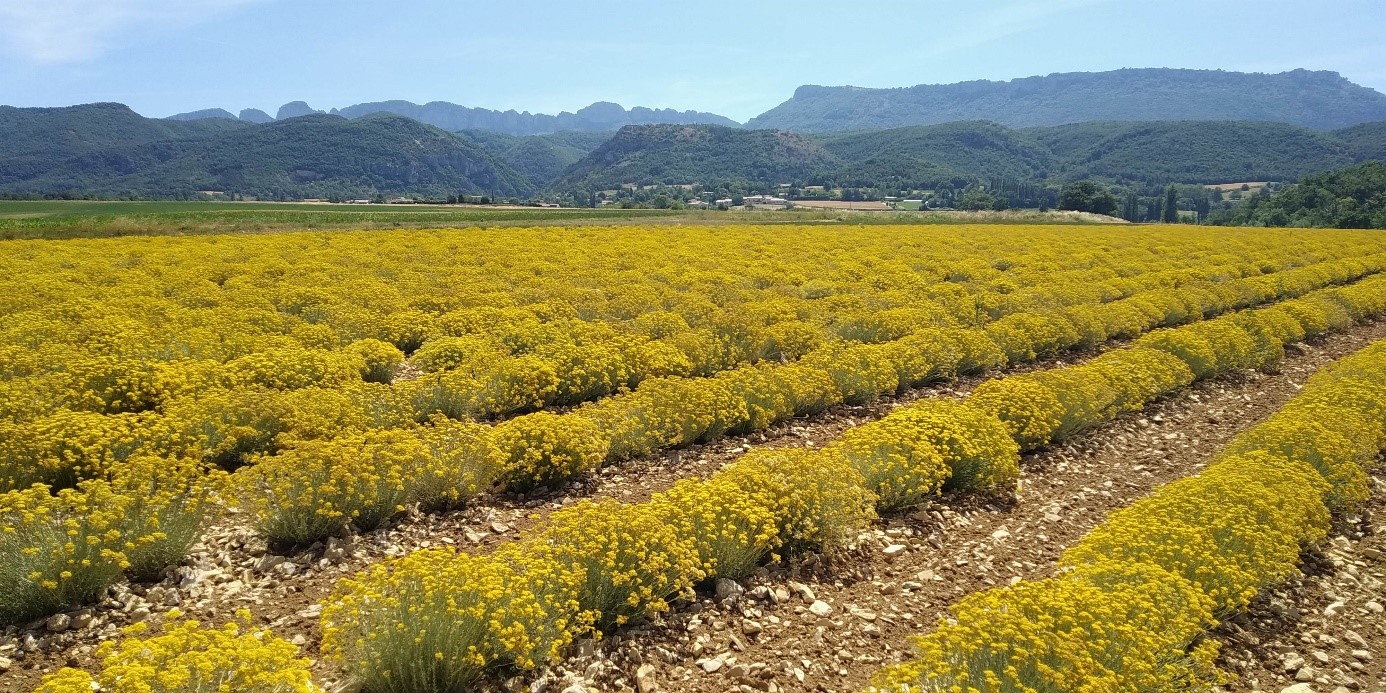
Green oregano field in Charpey (26)
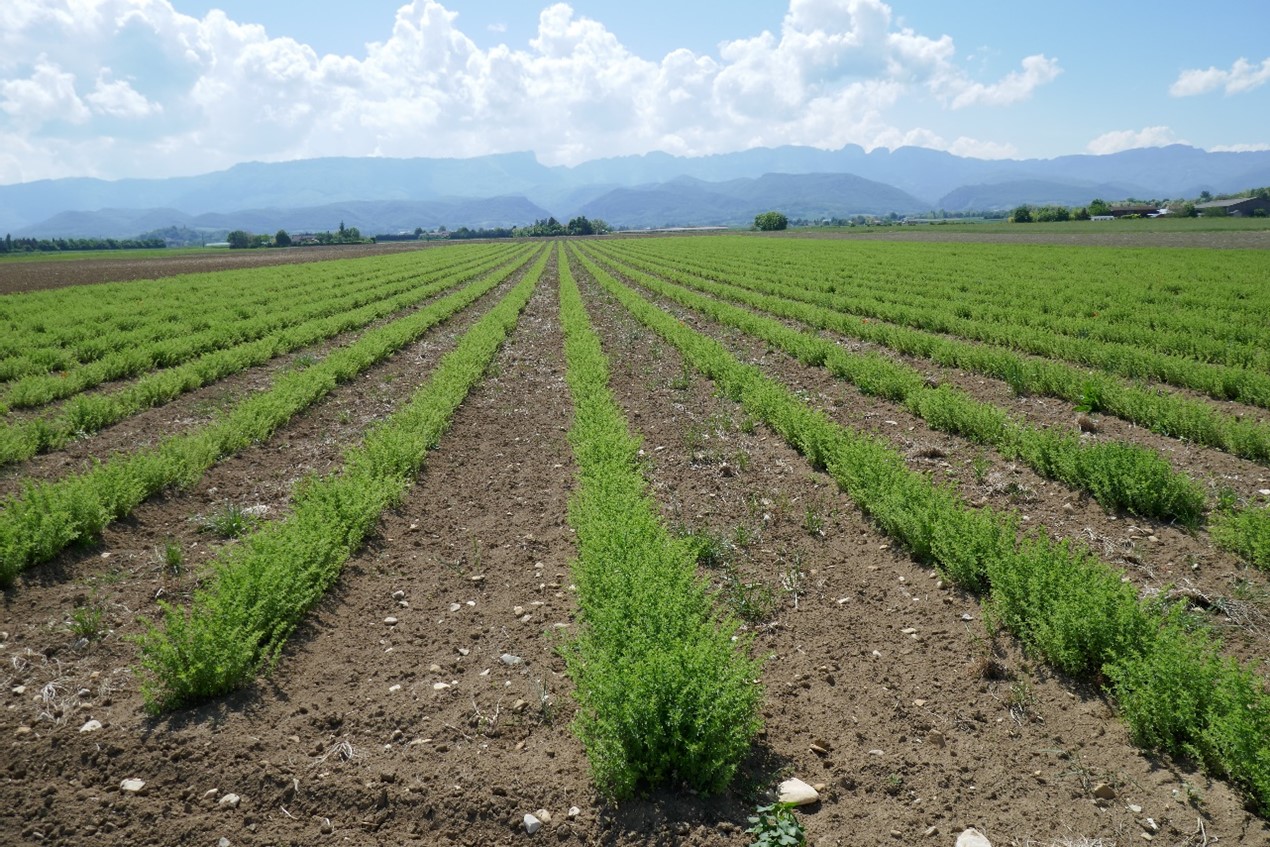
Our two distillers visiting a thyme field in Montvendre (26)
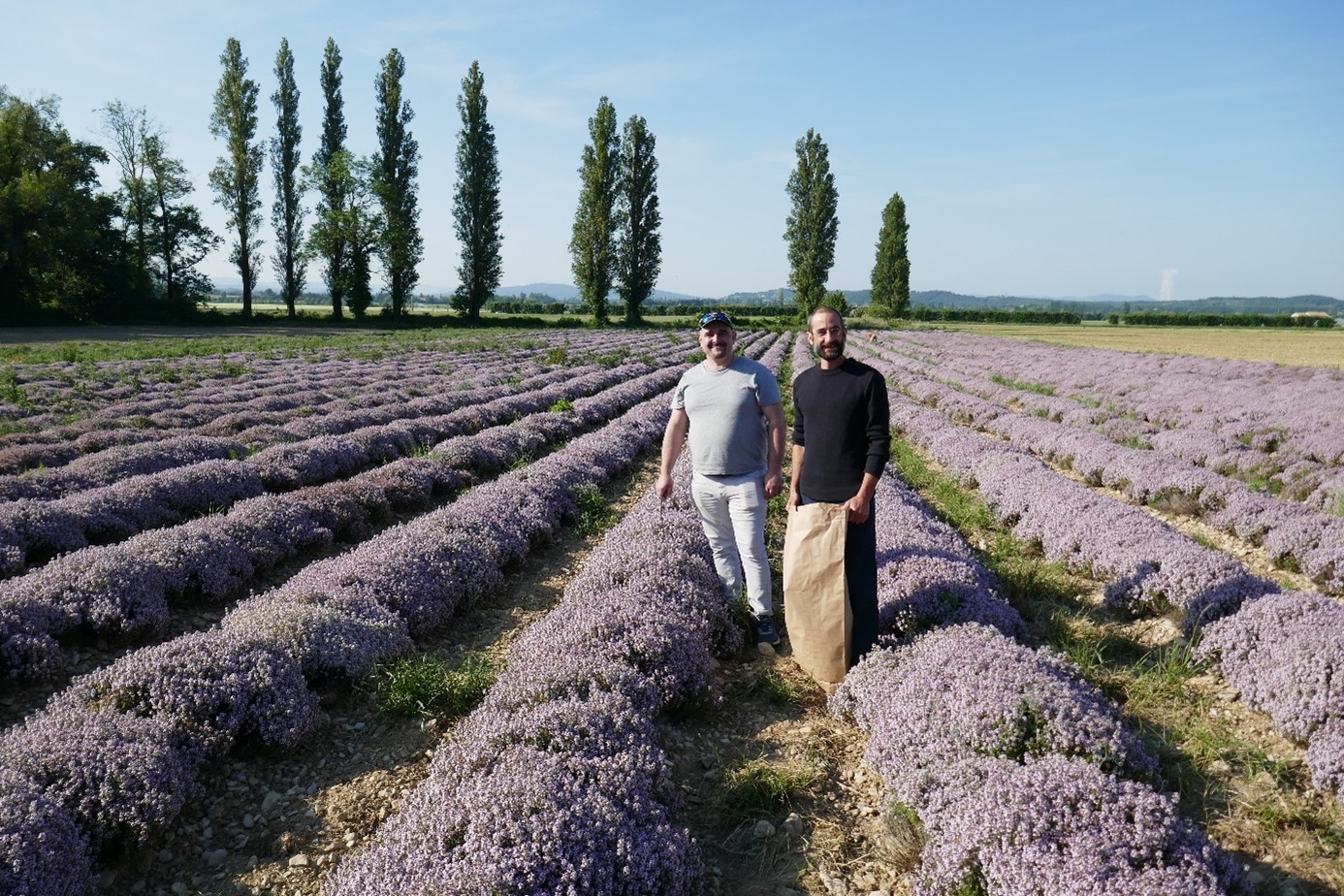
Plants for herbal teas and extracts
Among the 37 species that we cultivate, here is a selection of plants of which we produce significant quantities and of which we still have stock.
It is important to remember that all this production is 100% from local organic cultures (Dauphiné Provence sector); our raw materials are labelled in fair trade (Biopartenaire). These labels ensure an ethical origin and a traceability of the ingredients of your herbal teas and extracts. We carry out numerous analyses to respect the recent changes in regulations. We can contractualize productions over several years with customers who become partners, which guarantees a security of supply.
The thyme :
Available in the form of pure leaves, aerial part and tea bag cut. It is an essential component of winter herbal teas, it is also an emblematic ingredient of Herbes de Provence. Our production is about ten tons per year.
As a reminder, the traditional recipe of Herbes de Provence includes thyme, savory, rosemary and oregano but other recipes exist including marjoram.
The marjoram (Origanum majorana):
This plant gives off a sweet and indulgent scent. We have been developing it for some time in the form of pure leaves or as an infusion cup.
The rosemary:
Evoking Provence and the summer season, it can be used in herbal teas, extracts, in the form of leaves, infused or coarse cuts
The lemon verbena (Aloysia citrodora):
This plant native to South America has become so familiar that we forget its origins. Its lemony taste and digestive properties make it a common component of herbal teas and many liqueurs. We offer it in leaves separated from the stems by beating, in 2mm cut directly usable in tea bags or in aerial parts more or less cut for extracts.
The sage (Salvia officinalis):
The archetypal medicinal plant, used since time immemorial to relieve female disorders. It is also a classic aromatic of the Mediterranean cuisine with multiple virtues.
The blackcurrant (Ribes nigrum) :
These are the very fragrant leaves of the well-known shrub, harvested twice a year, beaten to separate them from the stems. They will give an original and appreciated flavor to your herbal teas; its properties promoting the elimination are comparable to the cherry stem which is difficult to find in organic. It is an ingredient in so-called "slimming" herbal teas.
The sweet mint:
This species that we have selected and multiplied is a mint menthone (Mentha spicata 'Mojita'). It goes well with green tea and other beverages as its variety name indicates. Very well adapted to our region we can provide large volumes in the form of cut infusette or cut aerial part for extracts.
The lemon savory (Satureja montana ‘citriodora’):
Finally, we have developed this lemon-flavored mountain savory to replace lemon thyme. Its lemon flavor is powerful and very pleasant. This novelty should quickly find its place in the world of herbal teas.
Rosemary in flower
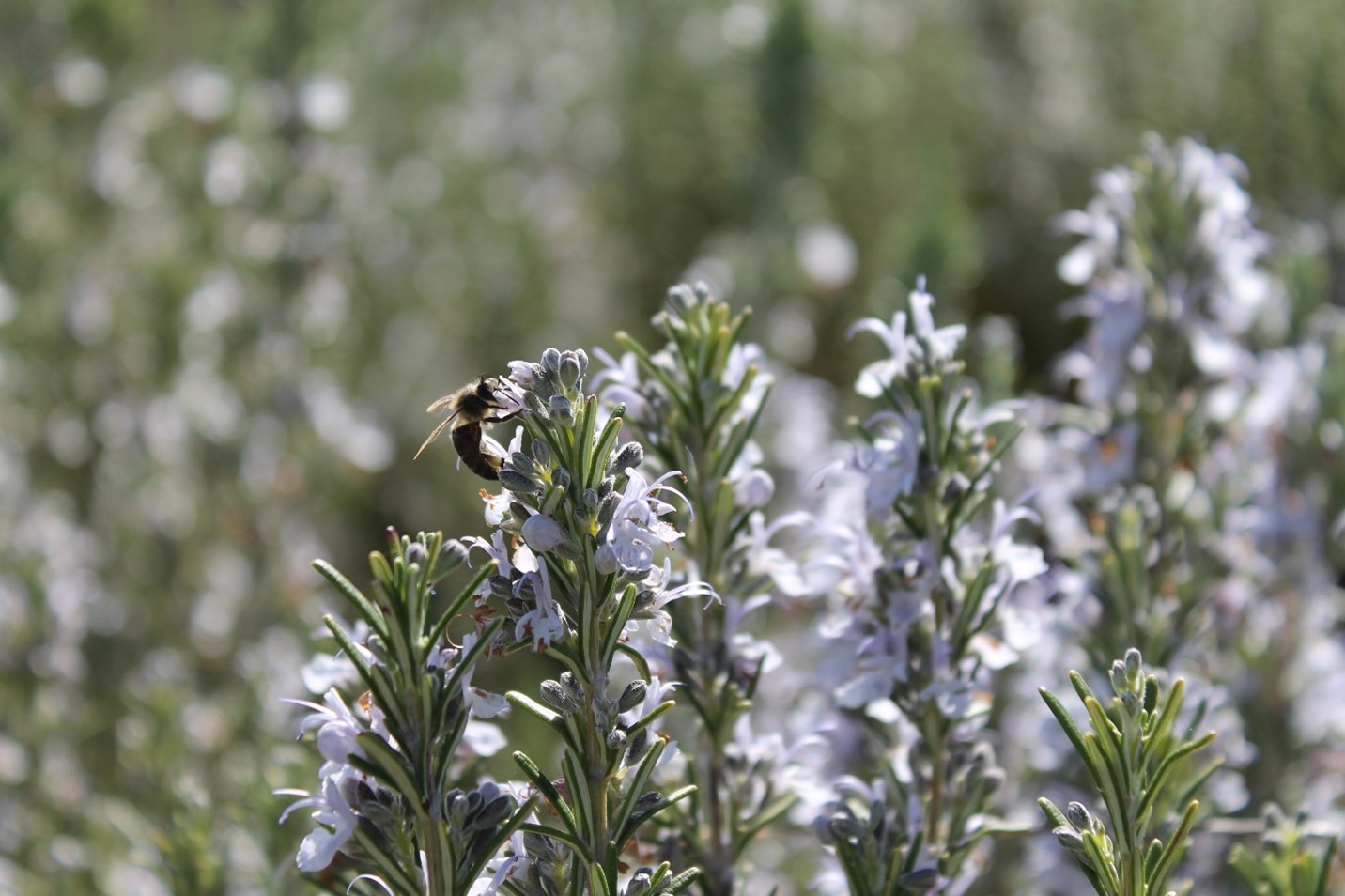
Sweet mint ‘Mojita’
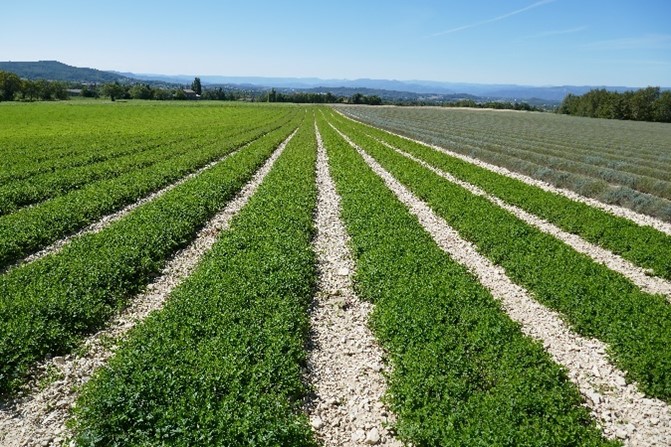
Last manual weeding before verbena harvest
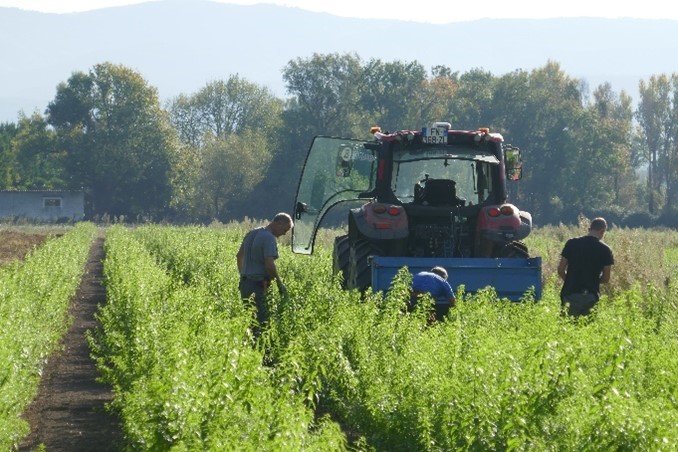
Do not hesitate to browse through our catalog, to contact us for any information, or to start a project.

